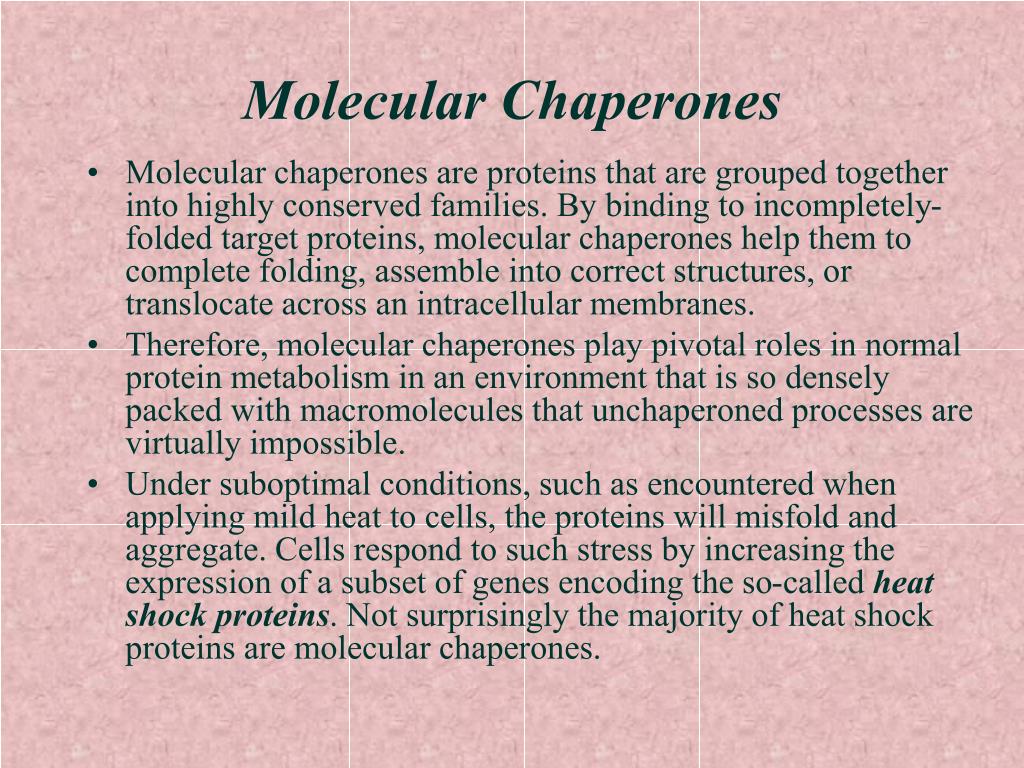

Recognizing and Correcting MistakesĬareful study, both in vivo and in the test tube, has demonstrated that molecular chaperones bind to their non-native substrate proteins by recognizing exposed non-polar surfaces ("non-polar" means that they are not attracted to water). Most chaperones are also abundantly expressed under normal cell growth conditions, where they recognize non-native conformations occurring during both protein synthesis (prior to correct polypeptide chain folding), and later misfolding events. It was later discovered that chaperones recognize the non-native, partially misfolded states of proteins that accumulate during high temperature stress. It was quickly determined that this "chaperone" protein directing correct assembly was identical to one of the many proteins expressed at high levels when cells are grown at high temperatures (hence the common alternative name, "heat-shock protein," or Hsp). A new protein was identified that was required for correct folding of a large enzyme complex in chloroplasts, yet the mysterious protein was not associated with the final assembled complex. Discovery of ChaperonesĬhaperones were originally identified in the mid-1980s from studies of protein folding and assembly in plant chloroplasts. Chaperones are found in all types of cells and cellular compartments, and have a wide range of binding specificities and functional roles.

The misfolded or unfolded polypeptide chains to which chaperones bind are said to be "non-native," meaning that they are not folded into their functional conformation. All proteins are created at the ribosome as straight chains of amino acids, but must be folded into a precise, three-dimensional shape (conformation) in order to perform their specific functions. Such proteins violate Anfinsen's dogma.Molecular chaperones are proteins and protein complexes that bind to misfolded or unfolded polypeptide chains and affect the subsequent folding processes of these chains. However, some highly specific 'steric chaperones' do convey unique structural information onto proteins, which cannot be folded spontaneously. In this case, chaperones do not convey any additional steric information required for proteins to fold. It is for this reason that many chaperones, but by no means all, are also heat shock proteins because the tendency to aggregate increases as proteins are denatured by stress. One major function of chaperones is to prevent both newly synthesised polypeptide chains and assembled subunits from aggregating into nonfunctional structures. The first protein to be called a chaperone assists the assembly of nucleosomes from folded histones and DNA and such assembly chaperones, especially in the nucleus, are concerned with the assembly of folded subunits into oligomeric structures. The common perception that chaperones are concerned primarily with protein folding is incorrect. In molecular biology, molecular chaperones are proteins that assist the non-covalent folding or unfolding and the assembly or disassembly of other macromolecular structures, but do not occur in these structures when the structures are performing their normal biological functions having completed the processes of folding and/or assembly. Freebase Rate this definition: 0.0 / 0 votes


 0 kommentar(er)
0 kommentar(er)
